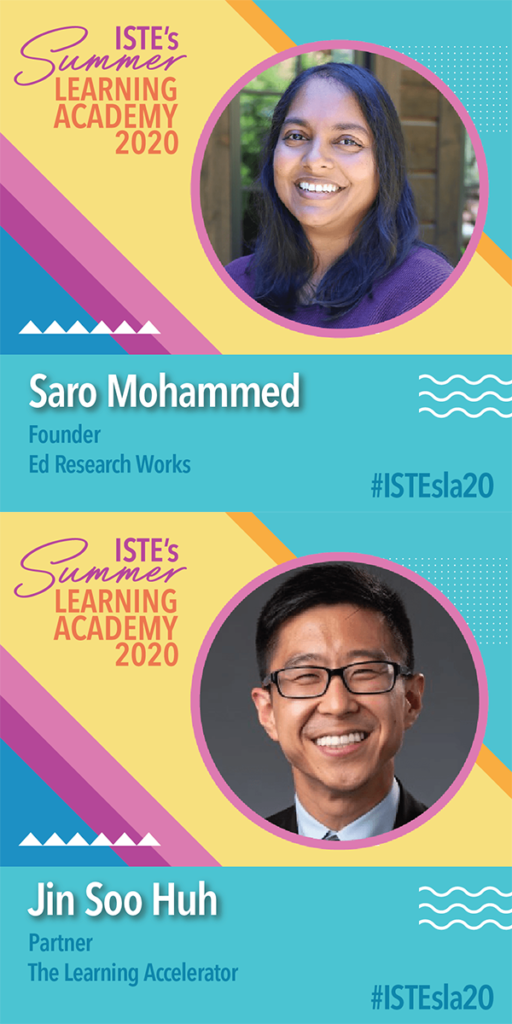Applying Learning Science in Online/Blended Learning Environments – #ISTEsla20 Wk 3 Day 1
The following post has been completed as part of my personal reflection as I work through the ISTE Summer Learning Academy #ISTEsla20 Any images, tables, or direct quotes (as indicated with the appropriate formatting) are provided from the specific course or webinar and can be credited to: ISTE Summer Learning Academy. (2020). https://summerlearningacademy.iste.org/

Week 3 – Day 1 is a topic I’m very interested in circling back to. In 2013 I had an opportunity to attend a PD session with Dr. Kathie Nunley who spoke to the student brain, including the affect electronics have on RAs. This sparked an interest for me and I’m looking forward to learning more. It is facilitated by Saro Mohammed and Jin Soo Huh and is described as follows:
“Decades of research on how people learn provides useful insights for making learning interactions effective and supportive of a variety of student needs. Learning in digital environments, whether fully online or blended, adds another layer of student needs, often adding to and exacerbating the inequities that exist in physical learning environments. Fortunately, the science of learning can be applied in digital spaces and can reduce the inherent inequities that come both from in-person and online/blended learning. This presentation will focus on how to do just that.“
Main Takeaways
- Attention and motivation are key to learning
- a filter for learning
- necessary for learning
- it is finite (you can only focus on one thing)
- can be directed
- motivation fuels ability to maintain attention
- intrinsic or extrinsic
- students can focus attention by using graphic organizers
- reduce distractions and uncertainty with routines (includes digital distractions; the number of apps/websites they need to use in one task)
- Retrieval is part of the learning process
- moving information from long-term memory back into working memory & strengthens connections
- builds metacognition
- do nows, exit tickets, dry erase boards, polls, Q & A, etc
- prompts can be provided
- graphic organizers, checklists, symbols can be used to assist
- Feedback includes clear understanding of the learning target & success criteria, self-feedback, and opportunities to revise before getting feedback from others
- how a learner knows if they are on the right path and if anything has been missed
- explicit, clear, timely, descriptive and focus on the why
- tied to goals and progress
Questions
- Have you worked through the learner-side of our LMS on various devices (computer, tablet, smart phone app) to familiarize yourself with your students’ experience?
- Does your programming include strategies for attention and motivation?
- does this strategy focus attention on salient content? decrease distractions? activate prior knowledge?
- does this strategy activate learner intrinsic motivation?
- Does your programming include strategies for retrieval of information?
General PD Thoughts
- Starting a session off with a quick interactive community-building activity gets participants involved and learning more about one another.
- Today’s webinar shared the following ed tech tools: Kahoot, Socrative Space Race, Plickers, Pear Deck, and Quizizz.
- Thank you to Saro and Jin-Soo for sharing!
Read all of the #ISTEsla20 posts:
- Microcourses
- Week 3
- Week 2
- Week 1
4 thoughts on “Applying Learning Science in Online/Blended Learning Environments – #ISTEsla20 Wk 3 Day 1”